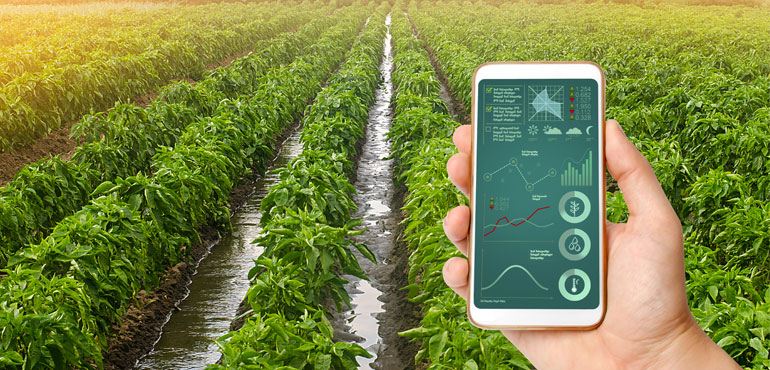Introduction
Agriculture has been the backbone of human civilization for thousands of years. However, with climate change, rising global demand, and labor shortages, traditional farming methods are struggling to keep up. The solution? Smart Farm Management powered by IoT (Internet of Things).
By integrating IoT sensors, automated irrigation systems, AI-driven analytics, and remote monitoring, farmers can increase efficiency, optimize resources, and improve crop yields. In this article, we will explore how Smart Farm Management is transforming the agricultural sector and why it is essential for the future of food production.
1. What is Smart Farm Management?
Smart Farm Management refers to the use of IoT and digital technologies to monitor, analyze, and optimize farm operations in real time. This includes:
- IoT Sensors to track soil moisture, temperature, humidity, and crop health
- Automated Irrigation Systems to optimize water usage
- AI & Big Data Analytics to predict weather patterns and pest outbreaks
- Remote Monitoring using smartphones, tablets, or cloud platforms
By leveraging these technologies, farmers can increase productivity, reduce costs, and enhance sustainability.
2. Key Components of Smart Farm Management
a. IoT Sensors for Real-Time Data Collection
IoT sensors are the backbone of Smart Farm Management. They collect real-time data on:
- Soil Conditions – Moisture levels, pH, nutrient content
- Weather Patterns – Temperature, humidity, wind speed
- Crop Health – Disease detection, growth tracking
- Livestock Monitoring – Tracking movement, health, and feeding patterns
This data helps farmers make data-driven decisions to improve efficiency and prevent crop loss.
b. Automated Irrigation Systems
Traditional irrigation methods often lead to water waste and over-irrigation, which can damage crops. Smart irrigation systems use:
- Soil moisture sensors to determine when and how much to water
- Automated valves that open/close based on real-time data
- Weather forecasting to optimize water distribution
This ensures efficient water usage, reducing costs and promoting sustainability.
c. AI & Predictive Analytics
Artificial Intelligence (AI) processes large volumes of data to provide valuable insights such as:
- Predicting pest infestations before they spread
- Optimizing fertilizer application based on soil health
- Identifying crop diseases at an early stage
- Forecasting yield estimates for better market planning
AI-powered solutions minimize risks and maximize profitability for farmers.
d. Drone & Satellite Monitoring
Drones and satellite imagery provide aerial views of farmland, helping farmers:
- Detect crop stress caused by pests, disease, or water shortages
- Assess soil conditions and crop density
- Monitor livestock movement across large areas
This technology enables precision farming, reducing manual labor while increasing accuracy.
3. Benefits of Smart Farm Management
1. Increased Efficiency & Productivity
By automating repetitive tasks and using AI-driven analytics, farmers can:
- Increase crop yields by optimizing planting and harvesting schedules
- Reduce manual labor and focus on high-value activities
- Minimize waste by using precise amounts of water, fertilizers, and pesticides
2. Cost Savings & Resource Optimization
Smart farming reduces operational costs by:
- Lowering water and energy consumption
- Reducing fertilizer and pesticide usage
- Minimizing crop losses due to pests and diseases
3. Sustainable & Eco-Friendly Farming
With climate change becoming a growing concern, sustainable agriculture is more important than ever. Smart farming helps by:
- Conserving water through efficient irrigation systems
- Reducing chemical runoff with precise fertilizer application
- Lowering greenhouse gas emissions with optimized machinery usage
4. Real-Time Monitoring & Remote Access
Farmers no longer need to be physically present in the fields all the time. With IoT, they can:
- Monitor farm conditions from anywhere via a smartphone or tablet
- Receive alerts for critical issues like pest infestations or machinery breakdowns
- Control irrigation systems remotely for better resource management
5. Improved Livestock Health & Management
Smart sensors can track:
- Animal health and movement to detect illnesses early
- Feeding schedules for optimal nutrition
- Environmental conditions to ensure livestock well-being
This leads to higher productivity and better quality dairy, meat, and poultry products.
4. Real-World Applications of Smart Farm Management
1. Precision Crop Monitoring
Farmers use IoT sensors to monitor soil conditions and plant health, adjusting nutrient levels and irrigation in real time.
2. Automated Greenhouses
Smart greenhouses use AI-controlled ventilation, humidity, and temperature regulation to create optimal growing conditions without manual intervention.
3. Smart Livestock Management
IoT-enabled wearables track livestock health, alerting farmers to early signs of illness, reducing veterinary costs, and improving productivity.
4. Climate-Smart Agriculture
Predictive analytics help farmers adapt to climate change, selecting drought-resistant crops and adjusting planting schedules based on weather forecasts.
5. Challenges & Future of Smart Farm Management
While Smart Farm Management offers significant benefits, it comes with challenges such as:
- High initial costs for IoT infrastructure
- Technical expertise required for data management
- Rural connectivity issues limiting real-time monitoring
However, with advancements in 5G, AI, and affordable IoT solutions, these challenges are gradually being addressed. The future of Smart Farming includes:
- AI-powered autonomous farming robots
- Blockchain-based food traceability for enhanced supply chain transparency
- Vertical farming to maximize crop production in urban areas
With these innovations, Smart Farm Management will continue to revolutionize agriculture, ensuring food security and sustainability for future generations.
Conclusion
Smart Farm Management is not just a trend—it is the future of agriculture. By leveraging IoT, AI, automation, and predictive analytics, farmers can increase efficiency, reduce waste, and improve sustainability.
As the world faces population growth and environmental challenges, adopting smart farming practices will be essential for feeding the future.
Are you ready to transform your farm with IoT technology? Contact us today to learn how Smart Farm Management can help you optimize your agricultural operations.



 Tiếng Việt
Tiếng Việt